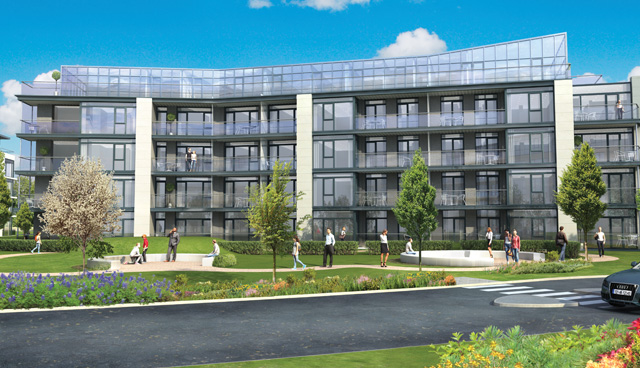
Mapping land availability
17th May 2019
Modular housing
17th May 2019The Evolution of the Irish Residential Sector


It seems hard to believe that when international investors began to arrive in the Irish market seeking Multifamily/Build-to-Rent residential investment opportunities in 2011, the concept was alien and yet less than a decade later, residential housing is a mainstream investment sector in its own right, with Build-to-Rent accounting for 30 per cent of overall investment spend in Ireland last year.
 The Build-to-Rent sector has come to prominence in Ireland because it is supported by unique economic & demographic fundamentals and a notable supply demand imbalance in the residential rental sector in cities such as Dublin.
The Build-to-Rent sector has come to prominence in Ireland because it is supported by unique economic & demographic fundamentals and a notable supply demand imbalance in the residential rental sector in cities such as Dublin.
At the time of the last Census of Population in 2016, 24 per cent of the population in the Dublin region were renting privately while in the Dublin City Council local authority area specifically, as many as 30 per cent of households were renting privately. With purpose-built Build-to-Rent stock now being developed in Dublin, we expect the homeownership rate in the city to continue to decline and the proportion of population renting to continue to increase over the next few years. This is mirroring trends being experienced elsewhere in Europe and in more established markets such as Canada and the United States.
As job creation continues in earnest in Ireland and the population of Dublin continues to expand due to increased urbanisation, there is considerable appetite for additional residential accommodation to be provided for purchasers and renters alike, particularly considering the low volume of new stock delivered to the market in recent years. With renting becoming increasingly acceptable as a form of housing tenure, there has been particularly strong appetite for modern rental accommodation in the environs of the city, particularly those that are adjacent to transport. In Dublin’s case, a high proportion of the workforce is transient in nature and the appetite for a high-quality rental offer with associated amenities is particularly compelling. The high-quality rental product that Build-to-Rent providers are now delivering in the city, is a vast improvement on the standard of accommodation provided to renters in the past.
In addition to demand for the product from renters for high quality modern accommodation and associated amenities, there is strong demand from investors to develop, acquire and manage residential investment portfolios. From a situation where residential traditionally didn’t form part of institutional investment portfolios in the Irish market prior to 2012, institutional investment in residential accommodation in Ireland has now become mainstream with specialist new entrant investors seeking opportunities alongside traditional investors who heretofore would not have included residential in their portfolios. This trend first began to emerge in 2012 as investors took advantage of opportunities to acquire entire blocks of residential apartments at attractive pricing (in many cases below replacement cost) following the unprecedented fall in residential property prices that occurred in the Irish market following the global financial crisis. Much of the residential stock that traded in Ireland between 2012 and 2015 comprised ‘multifamily’ assets that had originally been developed to sell individually to owner-occupiers but were subsequently acquired and adapted for rental purposes.
Build-to-Rent stock (i.e. purpose-built residential accommodation and associated amenities built specifically for long-term rental that is managed and serviced in an institutional manner by an institutional landlord) is vastly different to the traditional rental offer in the Dublin market. It first started to emerge in the Irish market from 2016 onwards, partly as a result of a relaxation of onerous apartment planning standards, which improved the viability of apartment development. Indeed, between 2012 and 2015, all of the residential stock that traded in the Irish market comprised standing stock with forward commit deals only materialising from 2016 onwards as new purpose-built rental schemes with associated communal space and amenities started to obtain planning and commence construction. The next iteration of Build-To-Rent in the Irish market is likely to see large scale platform players chasing scale and core institutional investors replacing the private equity type players that have been active in this space in recent years.
Now that modern purpose-built Build-to-Rent residential stock is being developed in the Irish market, we expect to see residential accounting for a greater proportion of overall investment spend in Ireland from this point forward. Having accounted for an average of less than 9 per cent of total investment in Ireland between 2012 and 2017, a phenomenal 30 per cent of real estate investment in Ireland during 2018 comprised residential investment with over €1.14 billion of residential assets traded in the period in 34 individual transactions. This included a number of forward commit transactions.
According to our research there is more than €6.3 billion targeting the Build-to-Rent sector in Ireland at present up from approximately €5.3 billion this time last year with most of this capital concentrating on the Dublin market. 32 per cent of this capital emanates from US investors with European investors accounting for a further 24 per cent of the pool of capital targeting this sector in Ireland at present and 22 per cent emanating from Irish investors. A further 12 per cent of demand at present is emanating from Canadian investors.
Purpose-built Build-to-Rent schemes that offer the highest quality design together with the correct blend of commercial amenity, public open space and private amenity space to match the needs of the local demographic will attain the highest occupancy and ultimately achieve the highest rent, particularly where the schemes are located close to public transport. We expect that the vast majority of the new purpose-built Build-to-Rent stock that will be developed in Dublin over the coming years will be located within the M50 motorway with demand expected to be strongest for schemes that are within walking distance of public transport, particularly those that are within a 20-30-minute commute time from Dublin city centre.
It is also likely that several older industrial, retail and commercial schemes within the M50 C-Ring motorway will ultimately be redeveloped for higher value alternative uses such as Build-to-Rent over the next few years – a trend that was alluded to by the Minister for Housing, Planning and Local Government Eoghan Murphy TD in announcing the establishment of the Government’s new Land Development Agency in September 2018. It is important to stress however that these new schemes will comprise more than just residential facilities but will place a high emphasis on placemaking incorporating a range of supporting leisure, retail, amenities and collaborative space to enable residents to work, play and live in close proximity.
As the sector matures, an increasing number of investors are now looking for opportunities to invest in the development of micro-living and co-living concepts, which they perceive to be particularly appropriate in a Dublin context. We expect to see an increase in the volume of planning applications for co-living concepts in due course as end users demand more flexible and diverse living spaces. It will take some time however to finesse the design element for the Irish market and to ensure that the communal amenities and facilities are appropriately placed and of sufficient size and quality to compensate for the smaller bedrooms that are traditionally associated with this form of development. Large scale platform players are targeting scale in the Irish market and we expect that professional operators will start to emerge in the coming years as the sector becomes increasingly professionalised and larger in scale.
Tim MacMahon
Head of Residential Capital Markets,
CBRE Ireland
E: tim.macmahon@cbre.com
T: +353 (0)1 618 5500







